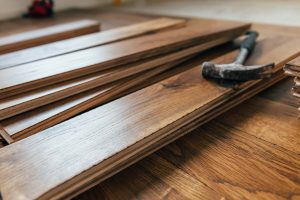Hardwood flooring is a classic choice, admired for its timeless beauty and durability. However, the very features that make it an appealing flooring option may inadvertently create an environment conducive to insect infestation. In this exploration, we’ll unravel the mysteries beneath the polished surface and delve into whether insects can truly find a home in your hardwood floors.
Understanding the Ideal Habitat for Insects:
Hardwood floors, crafted from natural materials, possess a unique set of characteristics that may attract insects. Cellulose, a primary component of wood, serves as a delectable feast for certain pests. Termites, renowned for their wood-munching tendencies, are particularly drawn to hardwood floors rich in cellulose fibers.
The type of wood used in your flooring can also impact its susceptibility to insect infestation. Some hardwoods are denser and less prone to pests, while others may be more inviting. Additionally, environmental factors like humidity and temperature play pivotal roles. High humidity levels can compromise the integrity of the wood, creating an environment that is not only appealing to insects but also conducive to their reproduction.
 Common Insects Found in Hardwood Floors:
Common Insects Found in Hardwood Floors:
Several insects are notorious for seeking refuge within hardwood flooring. Termites, with their insatiable appetite for cellulose, can silently wreak havoc beneath the surface. Powder post beetles, another formidable foe, can lay their eggs in the pores of hardwood, leading to structural damage over time. Identifying these potential intruders is crucial for the early detection and mitigation of infestations.
Termites, often referred to as “silent destroyers,” can remain hidden for extended periods, making it imperative to recognize signs of their presence. Look out for sagging floors, hollow sounds when tapping the wood, or the discovery of discarded wings near windowsills. Powder post beetles, on the other hand, leave behind small, round exit holes and fine, flour-like powder—the telltale signs of their activity.
Signs of Infestation:
Detecting an insect infestation in your hardwood flooring requires a keen eye for subtle indicators. Pay attention to changes in the appearance of the wood, such as discoloration, warping, or the presence of tiny holes. Unusual sounds, like tapping or rustling, can also be indicative of insect activity beneath the surface. In severe cases, you may even notice a distinct odor, signaling decay caused by pests.
Regular inspections and maintenance routines are vital in identifying these signs early on. Prompt action can prevent further damage and save you from costly repairs down the line.
Prevention and Maintenance:
Proactive measures are key to safeguarding your hardwood flooring against insect infestation. Start by controlling the indoor environment—maintain optimal humidity levels and address any leaks or water damage promptly. Seal gaps and cracks in the flooring to deny pests easy access, and consider using hardwoods less attractive to insects.
Regular cleaning is another effective preventive strategy. Remove dust, debris, and potential food sources for insects, reducing the likelihood of infestation. Applying protective coatings, such as sealants or finishes, can further fortify your hardwood floors against invasive pests. Have more questions about hardwood flooring? Stop by our showroom today in Peterborough where one of our team members would be happy to answer any questions!
